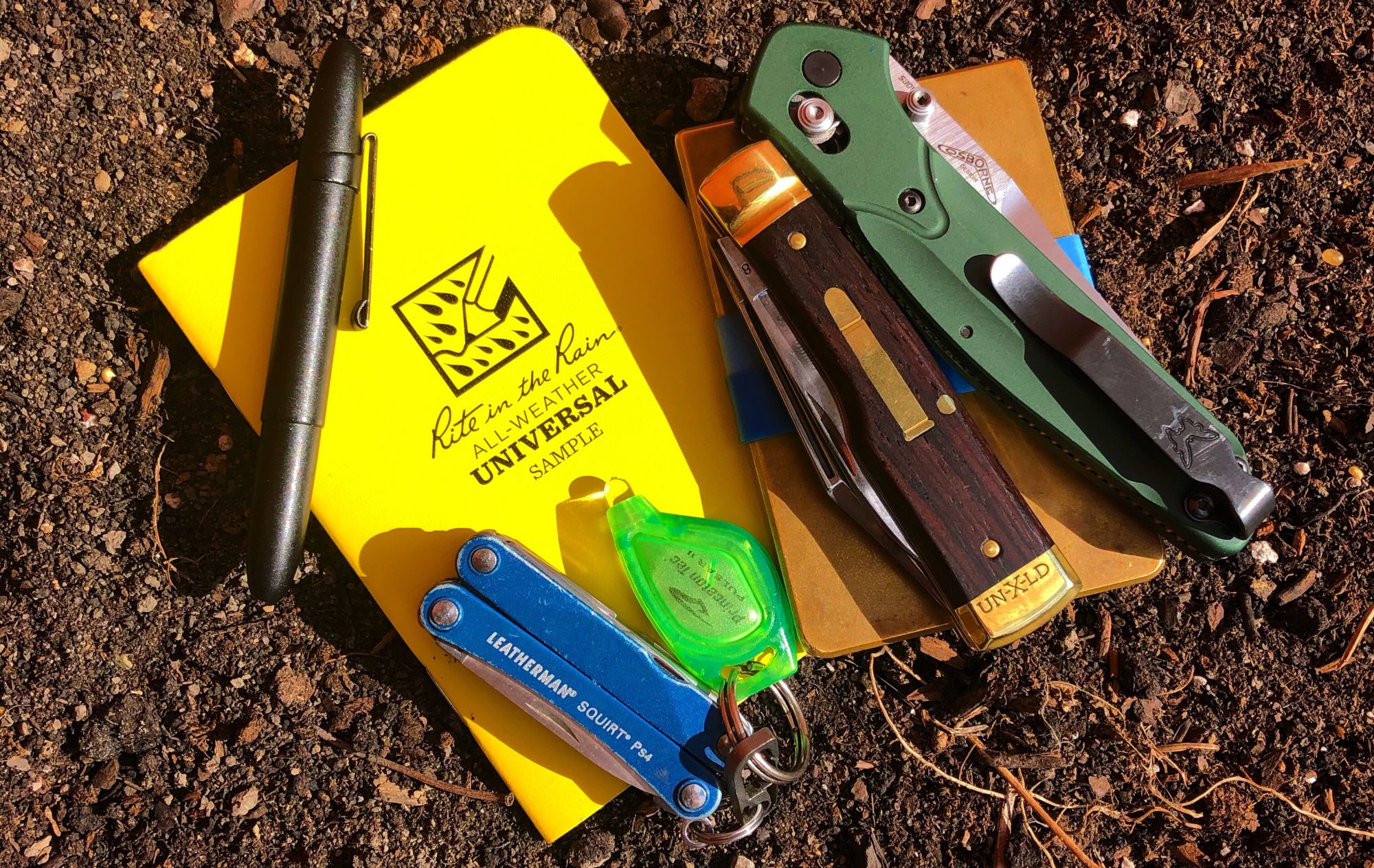One of the most important factors in how a knife functions is how it is put together. Among folding knives the three most common methods of holding the parts of a knife together are pinning, riveting, and screwing. Each of these three construction methods have their own merits and downfalls. In this article I will discuss the characteristics of each construction method and my opinions on them.
Pinned
Pin construction is probably the oldest and simplest of the three types discussed here. It involves a cylinder or tube, usually of some kind of soft metal like brass, being placed through consecutive holes in the handle. The pin transects the covers, liners, and usually a backspring or lockbar of the knife. The pin can either be held in place with glue, as often seen on fixed blades, or by the act of peening. Peening is when each end of the pin is hammered to create expansion, which holds it in place against the handle material.
Pin construction is most often seen on slipjoint knives, and is highly associated with “traditional” aesthetics. The only modern (i.e. one hand opening, locking, pocket clip) knives I can think of that have pin construction are Spyderco’s stainless steel handled knives.
Case knives tend to have traditional pinned construction, with the pins even with the surface of the cover material. Many traditional knife enthusiasts prefer the look of true pinned knives over other construction methods, because it gives a cleaner overall appearance.
Unfortunately, pinning is probably the least maintainable of the three methods discussed here. If a pinned knife becomes loose you’ll have to rehammer the pin, which can be both delicate and imprecise. Since friction is the only force holding the parts in place, the pieces of a pinned knife can move more than those in riveted or screwed knives.
Despite pinning’s practical downfalls, I still love how a pinned knife looks. There’s something indescribably classy about a pinned construction knife.

Riveted
Riveted handles are often confused as pinned, but there’s an important difference between the two. A riveted handle has heads that actually form an overhang, or structural barrier, upon which they rest. This makes a significant improvement in durability over pinned construction, because the overhang precludes gradual development of space and play. While riveted handles are even less maintainable than pinned handles, as they can’t be taken apart without extensive work, they generally don’t need any maintenance when made correctly. That said, it’s important for riveted handles to be done correctly, with the end user in mind. When done so the action can be extremely smooth but still solid and without play.
Spyderco sometimes uses rivets. Particularly, some of their “lightweight” and plastic handled knives are held together by rivets. On some, like the Manix 2 Lightweight, the pivot is held by a screw so that it can be adjusted if necessary. I have had several riveted knives from Spyderco and have never had an issue arise from the riveted construction or its impedance to disassembly, and have found them to rarely need maintenance.
Interestingly, Great Eastern Cutlery made knives are often not only “pinned” in a traditional sense but also “spun”. That means that some of the pins are expanded via spinning, rather than hammering, which creates a rounded surface to the pins that isn’t level with the covers. I would consider these to be riveted. Some traditional knife enthusiasts dislike the look of these spun rivets, but they certainly provide more rigidity to the knife’s construction.
Victorinox excels in their application of riveted handles. From the exposed rivets on their Alox models to the hidden ones on their plastic handles knives, Victorinox makes solid but smooth knives with a consistency that’s arguably unparalleled in the industry.
For me, the durability of riveted handles far outweighs the difficulty in disassembly and maintenance, when they’re done right.

Screwed
Screwed constructions is most common in modern knives, but has growing prevalence in slipjoint knives also in recent years. Most modern, i.e. one hand opening and locking, knives are made with screwed construction.
Screw construction uses screws that can, generally, be adjusted and even removed using the appropriate bits. There are several variations on how screws are used, but they often either screw into a tube from both sides of the knife or have a “male” and “female” screw on either side of the knife that screw directly into each other. I find screw construction knives typically require removable threadlocker to remain solid and not loosen through use. That said, they definitely offer much easier disassembly and more maintenance options.
While screw construction is ubiquitous on modern knives, more and more slipjoint knives with traditional influences are coming to market with screw construction. CollectorKnives / LionSteel, Benchmade, Spyderco (which has had their SlipIt line for a while), Rough Ryder, and many other brands are bringing more knives to the market with traditional aesthetics and slipjoint mechanisms but foregoing traditional construction for screw construction. I love to see more people become familiar with slipjoint and traditional knives and, though I don’t like the look of screw construction on them as much, I appreciate the accessibility that screw construction offers through its greater adjustability.

When it really comes down to it, I believe all three of these construction methods are valid and acceptable. Certain knives work better as one method than the other, whether from an aesthetic or functional standpoint. I think the main factor that determines if a particular construction method works for a particular knife is whether that method is applied correctly to a high quality level and with consideration for the knife’s overall aesthetic and intended use.



